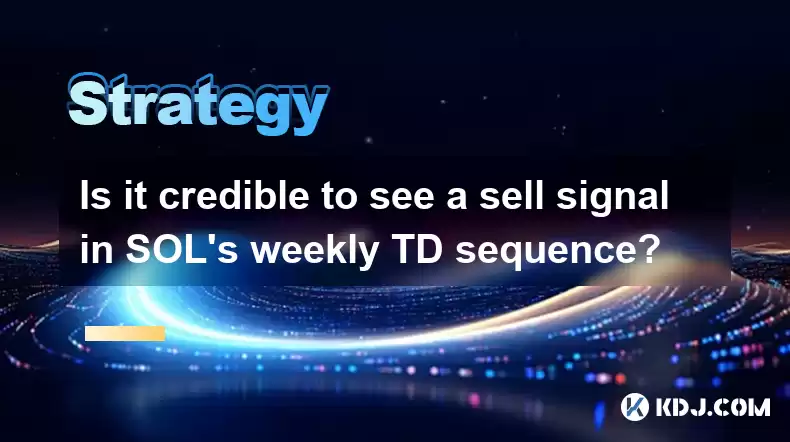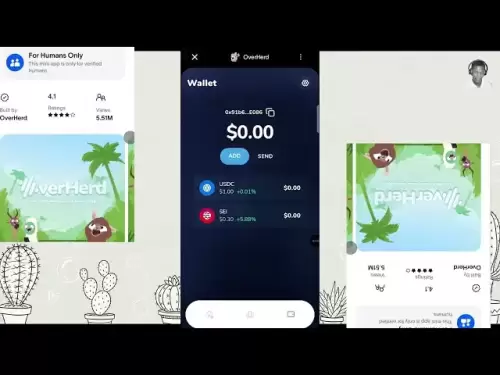-
 Bitcoin
Bitcoin $113600
-0.65% -
 Ethereum
Ethereum $3582
-2.02% -
 XRP
XRP $2.919
-4.02% -
 Tether USDt
Tether USDt $0.9999
-0.01% -
 BNB
BNB $749.8
-1.55% -
 Solana
Solana $162.1
-3.54% -
 USDC
USDC $0.9998
-0.01% -
 TRON
TRON $0.3318
-0.59% -
 Dogecoin
Dogecoin $0.1967
-4.77% -
 Cardano
Cardano $0.7148
-4.36% -
 Hyperliquid
Hyperliquid $37.30
-3.29% -
 Stellar
Stellar $0.3883
-4.29% -
 Sui
Sui $3.357
-4.00% -
 Bitcoin Cash
Bitcoin Cash $556.3
-1.84% -
 Chainlink
Chainlink $16.11
-4.08% -
 Hedera
Hedera $0.2344
-4.30% -
 Ethena USDe
Ethena USDe $1.001
0.00% -
 Avalanche
Avalanche $21.68
-4.66% -
 Litecoin
Litecoin $118.0
-3.37% -
 UNUS SED LEO
UNUS SED LEO $9.000
0.53% -
 Toncoin
Toncoin $3.161
-6.14% -
 Shiba Inu
Shiba Inu $0.00001193
-3.33% -
 Uniswap
Uniswap $9.434
-3.85% -
 Polkadot
Polkadot $3.577
-2.49% -
 Dai
Dai $0.9999
0.00% -
 Monero
Monero $288.7
-3.86% -
 Bitget Token
Bitget Token $4.209
-3.61% -
 Cronos
Cronos $0.1368
-1.06% -
 Pepe
Pepe $0.00001003
-4.60% -
 Aave
Aave $252.2
-3.73%
Is it credible to see a sell signal in SOL's weekly TD sequence?
The TD Sequential indicator, used on Solana's weekly chart, signals a potential sell when the countdown reaches 13, but credibility depends on market context and volume.
Apr 23, 2025 at 11:14 am

Understanding the TD Sequential Indicator
The TD Sequential indicator, developed by Tom DeMark, is a popular tool among traders for identifying potential price reversals in financial markets, including cryptocurrencies like Solana (SOL). This indicator is based on a series of numbers that count the number of consecutive price bars meeting specific criteria. When the count reaches a certain number, it generates a buy or sell signal. For the weekly TD sequence, the indicator analyzes weekly candlestick data to provide longer-term signals.
The Mechanics of TD Sequential
The TD Sequential indicator uses two main setups: the TD Setup and the TD Countdown. The TD Setup counts up to 9 or down to -9, depending on whether the market is in an uptrend or downtrend. Once the setup is complete, the TD Countdown begins, counting up to 13 or down to -13. A sell signal is generated when the countdown reaches 13 in an uptrend, and a buy signal is generated when it reaches -13 in a downtrend.
Applying TD Sequential to SOL's Weekly Chart
When analyzing Solana's weekly chart using the TD Sequential indicator, traders look for a completed TD Setup followed by a TD Countdown reaching 13. This sequence would indicate a potential sell signal, suggesting that the price of SOL might reverse and start a downward trend. To determine the credibility of this signal, traders must consider several factors.
Factors Influencing the Credibility of the Signal
The credibility of a sell signal in SOL's weekly TD sequence depends on various elements. Market context is crucial; the signal's reliability increases if it aligns with other technical indicators or significant market events. Volume is another important factor; a sell signal accompanied by high trading volume can be more credible than one with low volume. Additionally, the historical accuracy of the TD Sequential indicator on SOL's chart should be considered. Traders often backtest the indicator to see how well it has predicted past reversals.
Evaluating the Signal's Accuracy
To evaluate the accuracy of a sell signal in SOL's weekly TD sequence, traders can perform a backtest. This involves applying the TD Sequential indicator to historical data of SOL and observing how often the signals accurately predicted price reversals. A high success rate in backtesting can increase confidence in the signal's credibility. However, traders must be aware that past performance does not guarantee future results, and other market factors should also be considered.
Combining TD Sequential with Other Indicators
While the TD Sequential indicator can be powerful, it is often more effective when used in conjunction with other technical analysis tools. For instance, traders might look at moving averages, RSI (Relative Strength Index), or MACD (Moving Average Convergence Divergence) to confirm the sell signal. If multiple indicators suggest a bearish trend, the credibility of the TD Sequential sell signal increases. Conversely, if other indicators do not align with the sell signal, traders might be more cautious.
Practical Application in Trading
Traders using the TD Sequential indicator for SOL's weekly chart should follow a systematic approach. Here are the steps to apply the indicator effectively:
- Identify the TD Setup: Look for a completed 9-count in an uptrend or -9-count in a downtrend on the weekly chart.
- Monitor the TD Countdown: Once the setup is complete, track the countdown to 13 or -13.
- Confirm the Signal: Check for alignment with other technical indicators and market conditions.
- Execute the Trade: If the signal is credible and confirmed, consider entering a short position on SOL.
Risk Management and Signal Interpretation
When acting on a sell signal from the TD Sequential indicator, risk management is crucial. Traders should set stop-loss orders to limit potential losses if the market moves against the signal. Additionally, understanding the nuances of the indicator is important. For example, a false signal can occur if the countdown reaches 13 but the price does not reverse as expected. Traders should be prepared for such scenarios and adjust their strategies accordingly.
Frequently Asked Questions
Q: Can the TD Sequential indicator be used for intraday trading on SOL?
A: While the TD Sequential indicator is commonly used on daily and weekly charts, it can be adapted for intraday trading on SOL. However, traders should be aware that the signals may be more volatile and less reliable on shorter timeframes due to increased market noise.
Q: How often should the TD Sequential indicator be recalculated for SOL's weekly chart?
A: The TD Sequential indicator should be recalculated weekly for SOL's weekly chart. Traders should review the indicator at the end of each week to assess any new signals or changes in the existing sequence.
Q: Are there any specific conditions under which the TD Sequential sell signal is more reliable for SOL?
A: The TD Sequential sell signal for SOL is generally more reliable when it coincides with other bearish indicators, such as a bearish divergence in the RSI or a bearish crossover in the MACD. Additionally, if the sell signal occurs near a significant resistance level, its credibility increases.
Q: How can traders avoid false signals when using the TD Sequential indicator on SOL's weekly chart?
A: To avoid false signals, traders should use the TD Sequential indicator in conjunction with other technical analysis tools and consider the broader market context. Setting strict entry and exit rules, along with proper risk management, can also help mitigate the impact of false signals.
Disclaimer:info@kdj.com
The information provided is not trading advice. kdj.com does not assume any responsibility for any investments made based on the information provided in this article. Cryptocurrencies are highly volatile and it is highly recommended that you invest with caution after thorough research!
If you believe that the content used on this website infringes your copyright, please contact us immediately (info@kdj.com) and we will delete it promptly.
- DeriW Mainnet: Zero Gas Fees Revolutionize On-Chain Derivatives Trading
- 2025-08-06 10:30:11
- IOTA, Cloud Mining, and Eco-Friendly Crypto: A New York Investor's Take
- 2025-08-06 10:30:11
- Kaspa (KAS) Price Prediction: August 6 - Will It Break Free?
- 2025-08-06 10:50:12
- Meme Coin Mania: Arctic Pablo's Token Burn Ignites Presale Frenzy
- 2025-08-06 10:50:12
- Pi Network, Holders, and Market Turbulence: Navigating the Crypto Storm
- 2025-08-06 10:55:12
- XRP, DOGE, and the Altcoin Darling Dilemma: Where's the Alpha?
- 2025-08-06 08:30:11
Related knowledge

How to avoid common crypto investment mistakes?
Jul 13,2025 at 01:35am
Understanding the Risks of Crypto InvestmentInvesting in cryptocurrency can be highly rewarding, but it also comes with significant risks. One of the ...

What is a long-short crypto strategy?
Jul 15,2025 at 10:56am
Understanding the Basics of a Long-Short Crypto StrategyA long-short crypto strategy is an investment approach where traders simultaneously take long ...

What is a long-short crypto strategy?
Jul 11,2025 at 01:28pm
Understanding the Basics of Long-Short Crypto StrategyA long-short crypto strategy is an investment approach where traders take both long and short po...

How to use the RSI indicator for crypto?
Jul 12,2025 at 03:56pm
Understanding the RSI Indicator in Cryptocurrency TradingThe Relative Strength Index (RSI) is a momentum oscillator used to measure the speed and chan...

Is copy trading a good strategy for crypto beginners?
Jul 12,2025 at 08:28am
Understanding Copy Trading in the Cryptocurrency MarketCopy trading is a strategy where novice traders replicate the trades of experienced investors a...

How to build a crypto portfolio with $1000?
Jul 13,2025 at 08:14pm
Understanding the Basics of Cryptocurrency InvestmentBuilding a crypto portfolio with $1000 starts with understanding the fundamentals of cryptocurren...

How to avoid common crypto investment mistakes?
Jul 13,2025 at 01:35am
Understanding the Risks of Crypto InvestmentInvesting in cryptocurrency can be highly rewarding, but it also comes with significant risks. One of the ...

What is a long-short crypto strategy?
Jul 15,2025 at 10:56am
Understanding the Basics of a Long-Short Crypto StrategyA long-short crypto strategy is an investment approach where traders simultaneously take long ...

What is a long-short crypto strategy?
Jul 11,2025 at 01:28pm
Understanding the Basics of Long-Short Crypto StrategyA long-short crypto strategy is an investment approach where traders take both long and short po...

How to use the RSI indicator for crypto?
Jul 12,2025 at 03:56pm
Understanding the RSI Indicator in Cryptocurrency TradingThe Relative Strength Index (RSI) is a momentum oscillator used to measure the speed and chan...

Is copy trading a good strategy for crypto beginners?
Jul 12,2025 at 08:28am
Understanding Copy Trading in the Cryptocurrency MarketCopy trading is a strategy where novice traders replicate the trades of experienced investors a...

How to build a crypto portfolio with $1000?
Jul 13,2025 at 08:14pm
Understanding the Basics of Cryptocurrency InvestmentBuilding a crypto portfolio with $1000 starts with understanding the fundamentals of cryptocurren...
See all articles

























































































